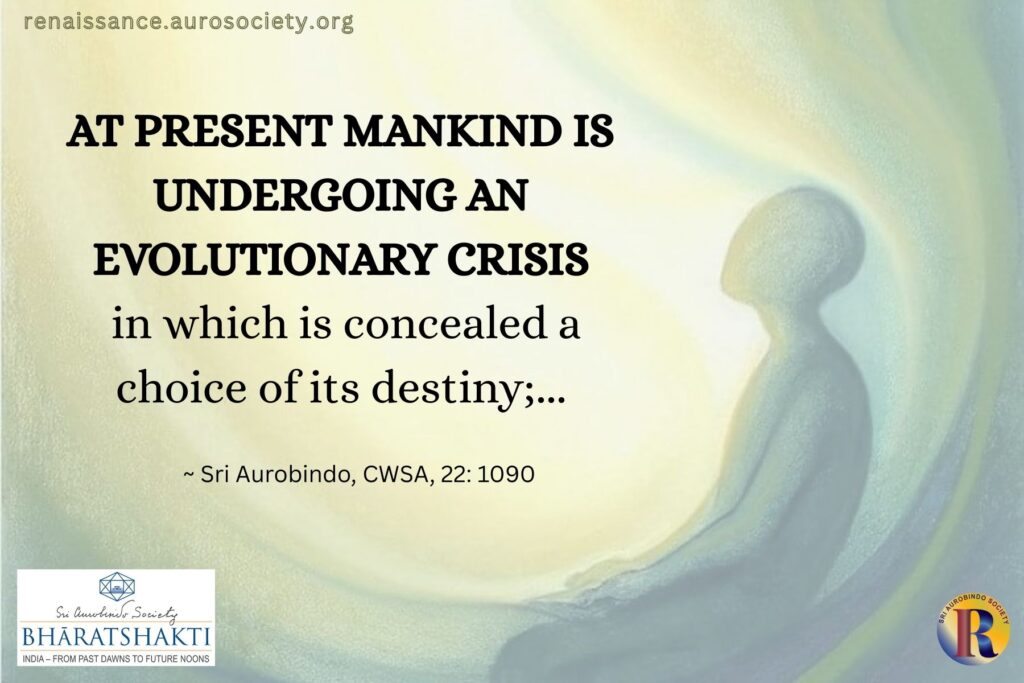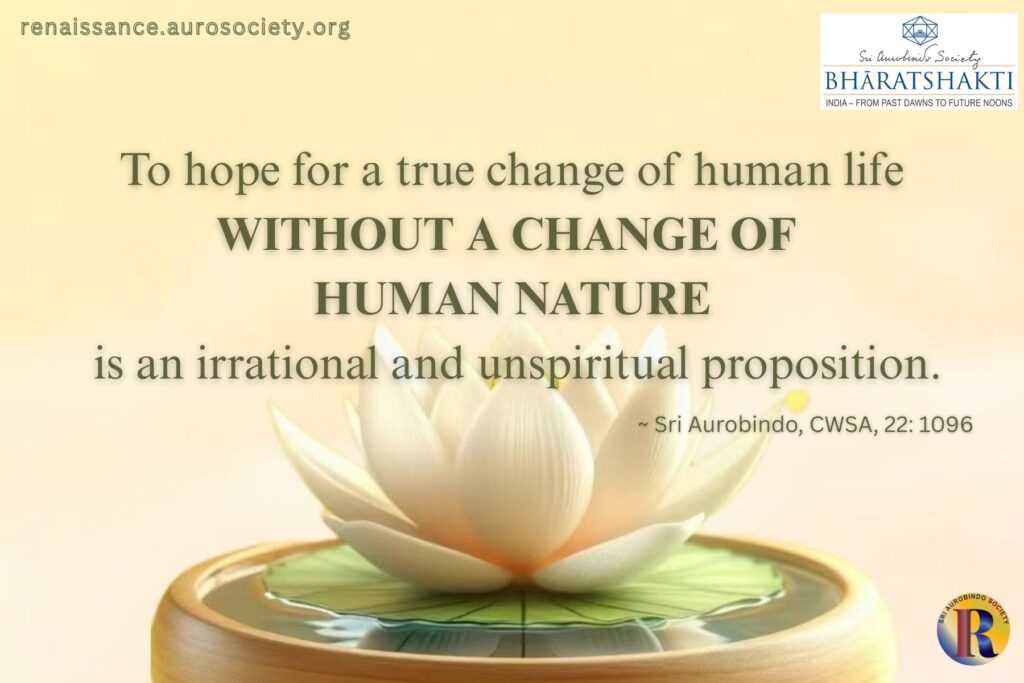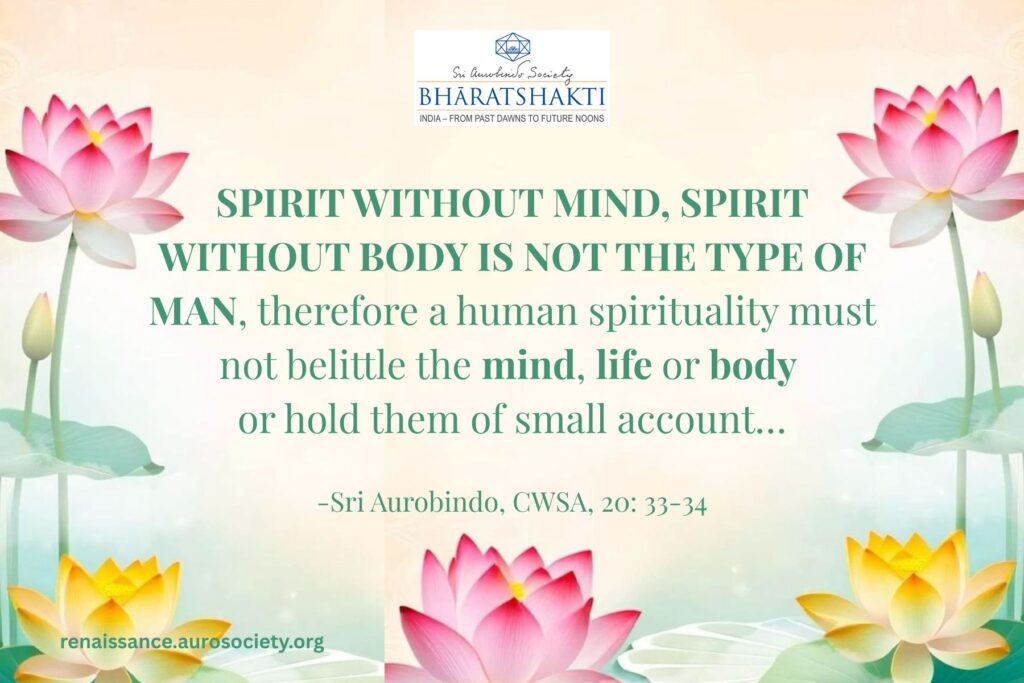Vol. III, Issue 7
Author: Sri Aurobindo
Editor’s note: We feature a few letters of Sri Aurobindo in which he speaks of Peace as the first foundation of yogic status. He also explains that to arrive at an established peace in all parts of the being takes a long time, but we must sincerely aspire for it.

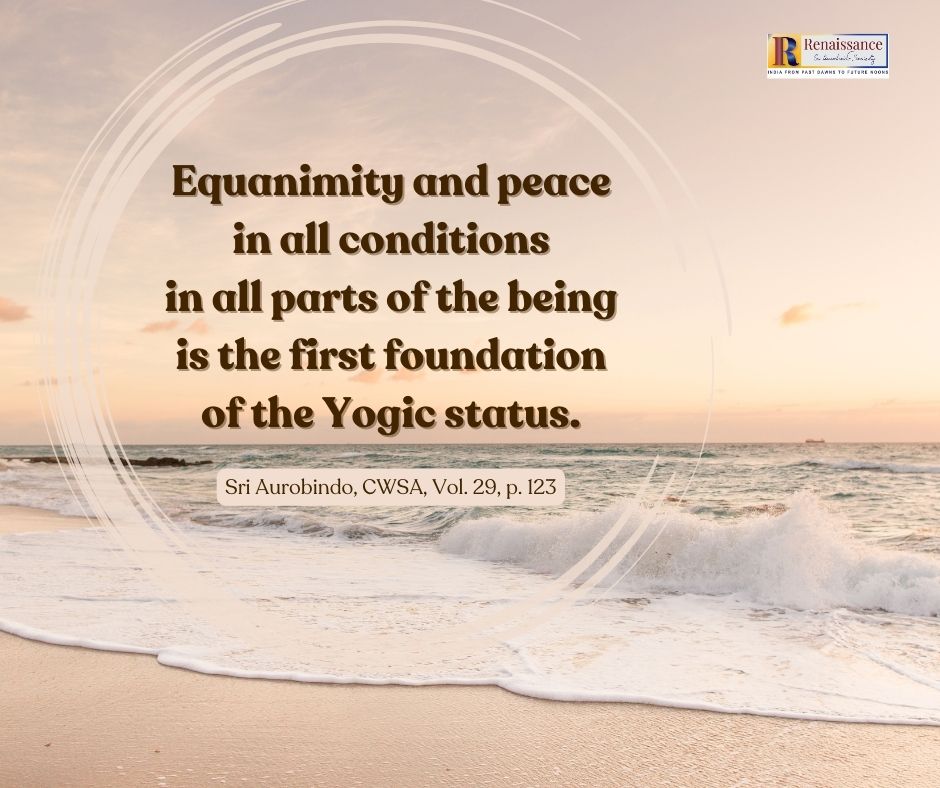
Equanimity and peace in all conditions in all parts of the being is the first foundation of the Yogic status. Either Light (bringing with it knowledge) or Force (bringing strength and dynamism of many kinds) or Ananda (bringing love and joy of existence) can come next according to the trend of the nature. But peace is the first condition without which nothing else can be stable.
***
. . . calm, peace, shanti are the necessary basis for any establishment of other things. Otherwise there is no solid foundation in the consciousness; if there is only unrest and movement, bhakti, Ananda and everything else can only come and go in starts and fits and find no ground to live on. It must, however, be not a mere mental quiet, but the deep spiritual peace of the shantimaya Shiva.
Peace and Calm
Peace is more positive than calm—there can be a negative calm which is merely an absence of disturbance or trouble, but peace is always something positive bringing not merely a release as calm does but a certain happiness or Ananda of itself.
There is also a positive calm, something that stands firm against all things that seek to trouble, not thin and neutral like the negative calm, but strong and massive. Very often the two words are used in the same sense, but one can distinguish them in their true sense as above.
Peace, Inertia and Force
The Peace is not of the nature of inertia, but the inertia (tamas) is a degradation of peace or rest as rajas is a degradation of divine Force. So when the physical is invited to peace and cannot receive it, it brings up inertia instead.
***
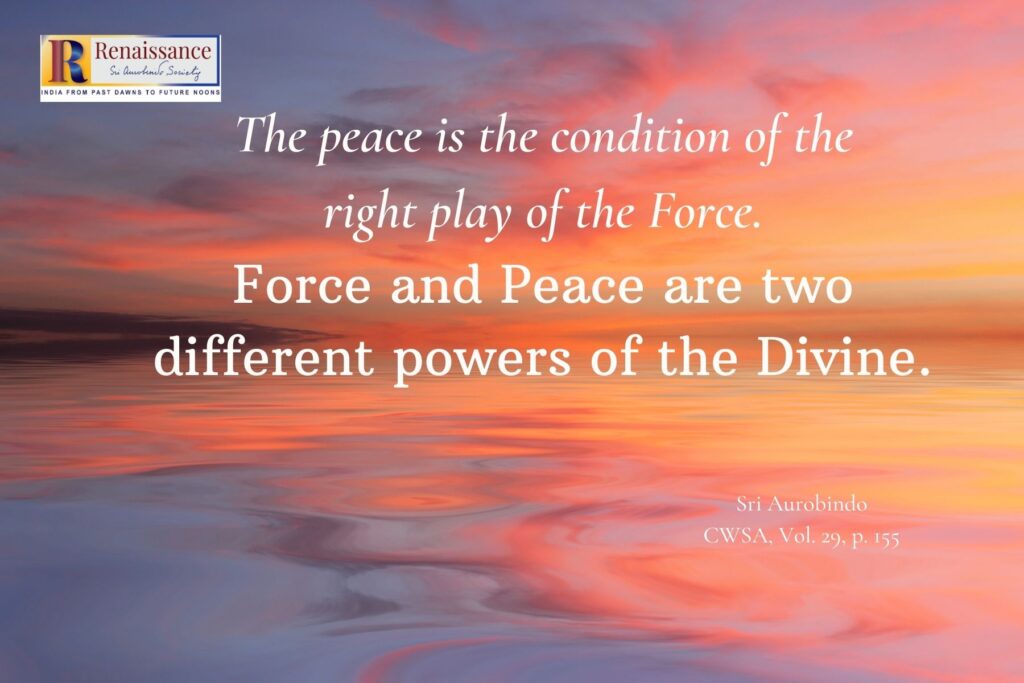
***
Peace is the first condition, but peace of itself does not bring Force—it is a receptacle of Force, not a bringer of Force.
***
A peaceful state is the basis of the Yogic consciousness. It is only when that is complete and fully established that the true intensity and energy can come.
Peace Comes Little by Little
To nobody does the divine calm and peace come uninterruptedly in the early stages of the Yoga—it comes little by little—it is sometimes absent for long periods together, or there are strong attacks which cloud it over. It is by long sadhana that one gets the permanent peace.
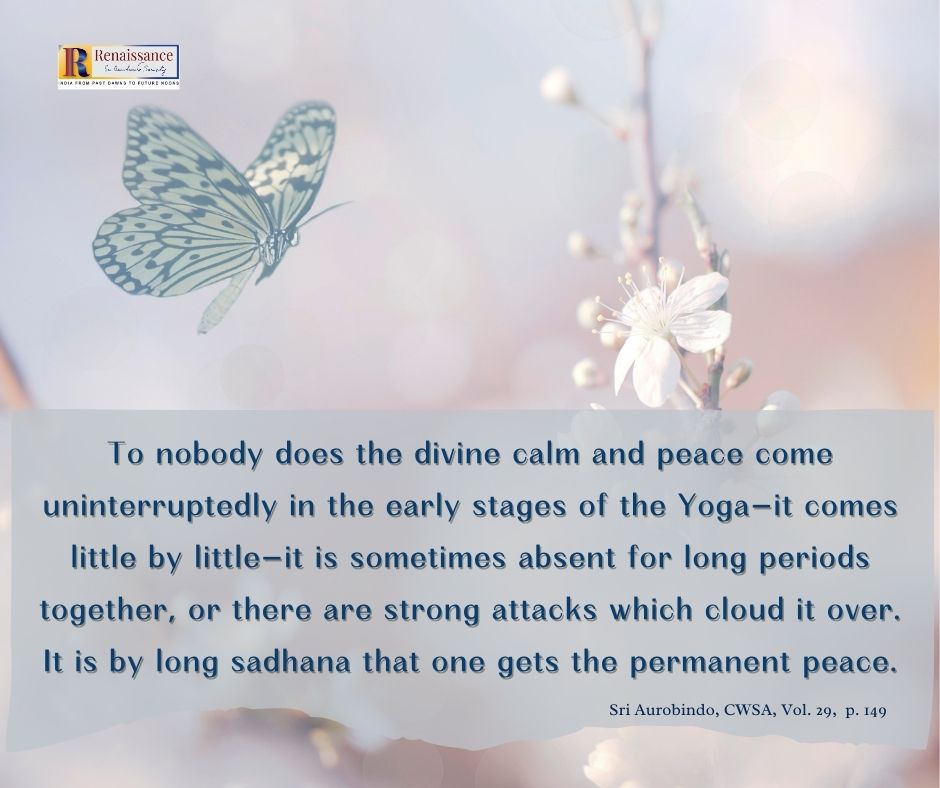
***
In the beginning the peace and calmness comes like that only for a short time. The Adhar cannot keep it, its own natural condition being different. But afterwards the power of holding increases until in some part of the being at least it is constant.
A Settled Peace and Silence in the Mind
The first thing to do in the sadhana is to get a settled peace and silence in the mind. Otherwise you may have experiences, but nothing will be permanent. It is in the silent mind that the true consciousness can be built.
A quiet mind does not mean that there will be no thoughts or mental movements at all, but that these will be on the surface and you will feel your true being within separate from them, observing but not carried away, able to watch and judge them and reject all that has to be rejected and to accept and keep to all that is true consciousness and true experience.
Passivity of the mind is good, but take care to be passive only to the Truth and to the touch of the Divine Shakti.
If you are passive to the suggestions and influences of the lower nature, you will not be able to progress or else you will expose yourself to adverse forces which may take you far away from the true path of Yoga.
Aspire to the Mother for this settled quietness and calm of the mind and this constant sense of the inner being in you standing back from the external nature and turned to the Light and Truth.
The forces that stand in the way of sadhana are the forces of the lower mental, vital and physical nature. Behind them are adverse powers of the mental, vital and subtle physical worlds. These can be dealt with only after the mind and heart have become one-pointed and concentrated in the single aspiration to the Divine.
***
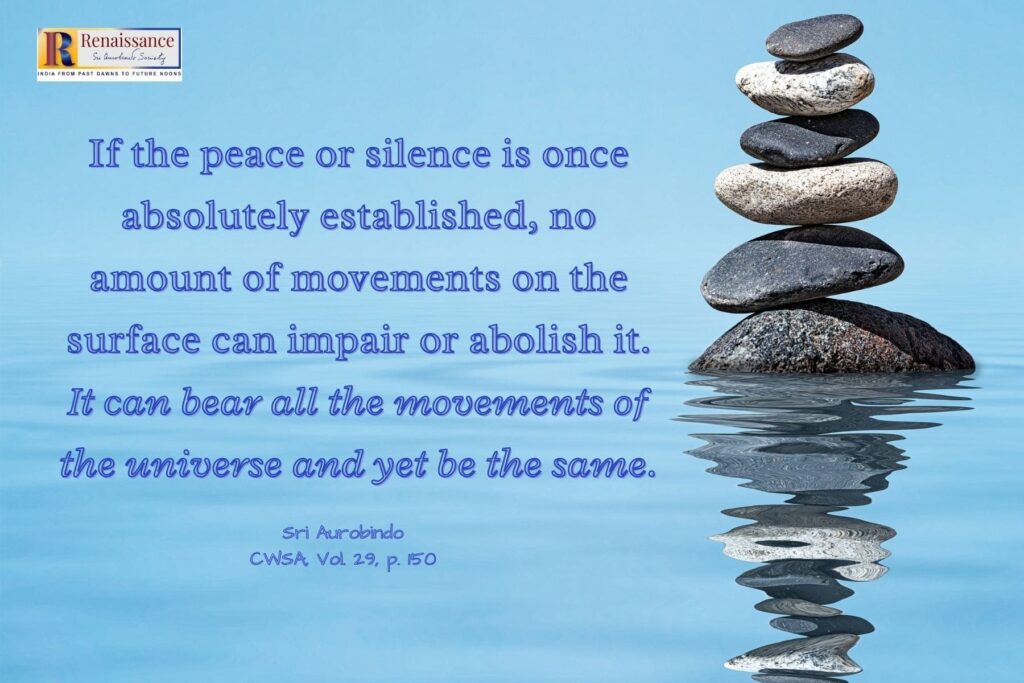
***
When the peace is fully established everywhere in the being, these things [reactions in the lower vital] will not be able to shake it. They may come first as ripples on the surface, then only as suggestions which one looks at or does not care to look at, but in either case they don’t get inside, affect or disturb at all.
It is difficult to explain, but it is something like a mountain at which one throws stones—if conscious all through the mountain may feel the touch of the stones, but the thing would be so slight and superficial that it would not be in the least affected. In the end even that reaction disappears.
***
The peace liberates from all dependence on outer contacts—it brings what the Gita calls the ātmarati.
But at first there is a difficulty in keeping it intact when there is the contact with others because the consciousness has the habit of running outwards in speech or external interchange or else of coming down to the normal level.
One must therefore be very careful until it is fixed; once fixed it usually defends itself, for all outer contacts become surface things to a consciousness full of the higher peace.
***
Even when there is the peace and the wideness, these things [imaginations about old enjoyments] can float on the surface and try to come in—only then they do not occupy the consciousness but touch it merely.
It is what was regarded by the old Yogis as a mechanical remnant of Prakriti, a continuation of its blind habit which remained after the essential liberation of the self. It was treated lightly as of no importance—but that view is not tenable in our sadhana which aims not only at a liberation of the Purusha but at a complete transformation of the Prakriti also.
***
The Inner Peace
It is quite usual to feel an established peace in the inner being even if there is disturbance on the surface. In fact that is the usual condition of the Yogi before he has attained the absolute samata in all the being.
***
[. . .]
The peace starts in the inner being—it is spiritual and psychic but it overflows the outer being—when it is there in the activity, it means either that the ordinary restless mind, vital, physical has been submerged by the flood of the inner peace or, at a more advanced stage, that they have been partially or wholly changed into thoughts, forces, emotions, sensations which have in their very stuff an essence of inner silence and peace.
***
If peace becomes permanent in the inner being, then the subnature becomes an external and superficial thing—one part of the consciousness is then free; unmoved by anything that happens, it regards the surface turmoil as something not belonging to itself.
If the peace extends in the same way into the external parts also, then the whole being becomes free and the inferior nature is felt only as something moving about in the atmosphere, trying to enter but unable to do so.
But this of course happens only when the descents of Peace have turned into a massive stability of Peace.
***
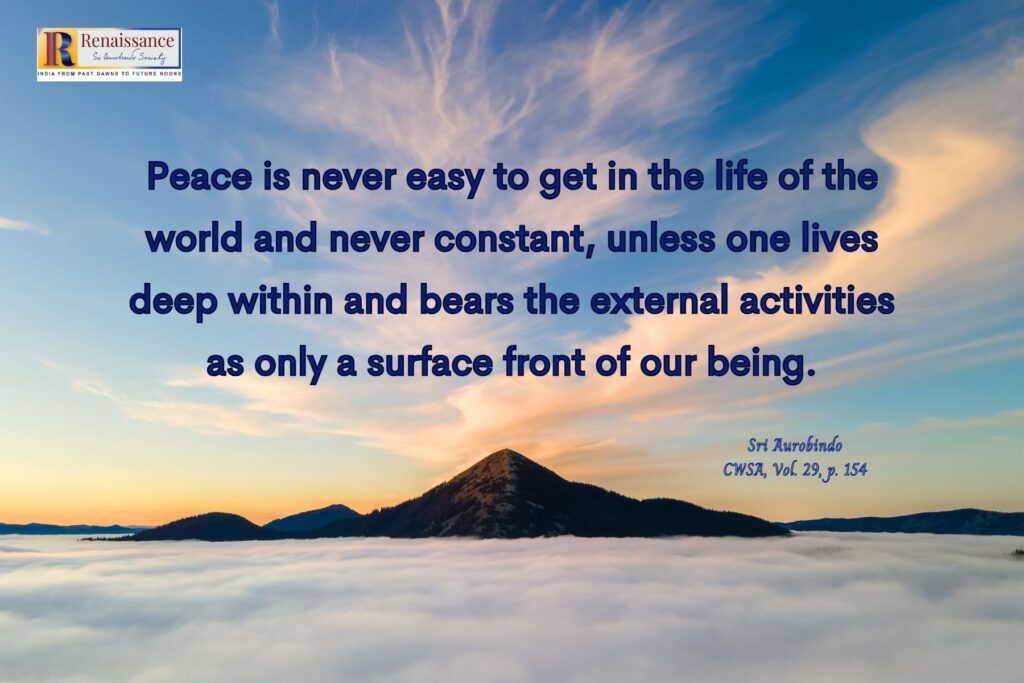
***
Peace, Joy, Ananda
To be full of peace, the heart quiet, not troubled by grief, not excited by joy is a very good condition. As for Ananda, it can come not only with its fullest intensity but with a more enduring persistence when the mind is at peace and the heart delivered from ordinary joy and sorrow.
If the mind and heart are restless, changeful, unquiet, Ananda of a kind may come, but it is mixed with vital excitement and cannot abide.
One must get peace and calm fixed in the consciousness first, then there is a solid basis on which the Ananda can spread itself and in its turn become an enduring part of the consciousness and the nature.
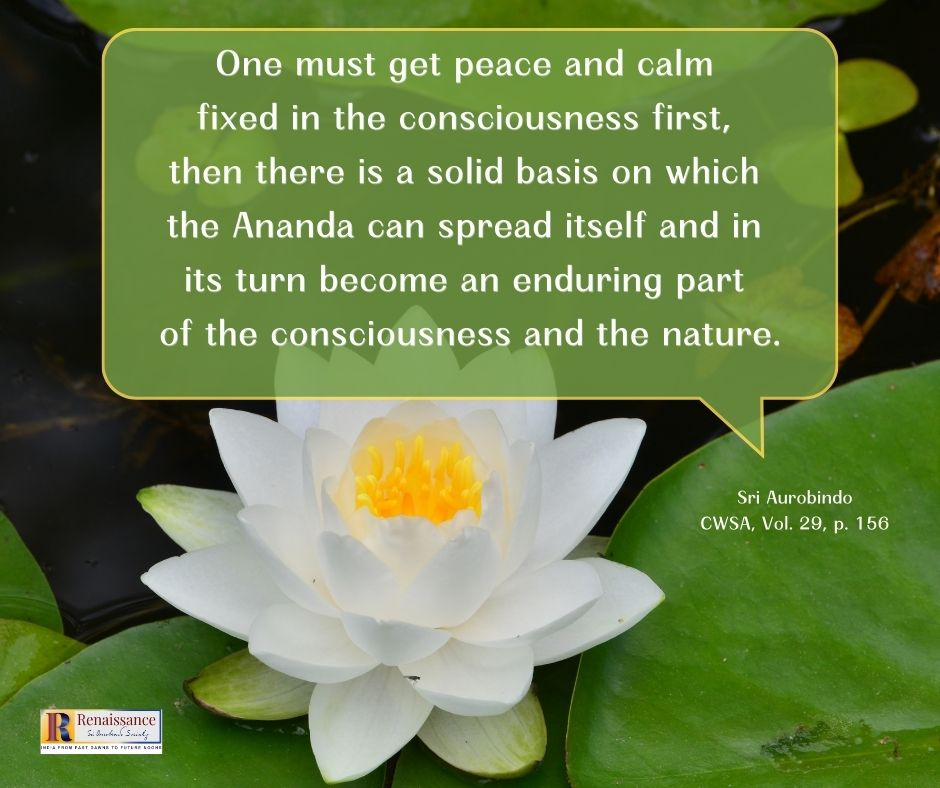
***
The peace need not be grave or joyless—there should be nothing grey in it—but the gladness or joy or sense of lightness that comes in the peace must be necessarily something internal, self-existent or due to a deepening of experience—it cannot, . . . , be conveyed by an external cause or dependent upon it, e.g. something amusing, exhilarating etc.
***
It is when one is full of peace that one laughs most gladly.
It is an inner condition, not something external like being silent or not laughing. It is a condition of serenity and stillness within in which there is no disturbance even if things go wrong or people are unpleasant or the body feels unwell—the state of serene inner gladness remains the same. It is self-existent.
***
Happiness is a condition of gladness, sense of inner ease and welfare, contentment, a sunlit life—it is more quiet in its nature than joy and delight.
Joy (harṣa) is more intense. It is a strong movement of great gladness with an exultation, a leaping up of the vital to take some happiness, good fortune or other thing pleasant to the being.
Delight is an intense joy or an intense pleasure in something or an intensely joyful condition. At its most intense it becomes what is called rapture or ecstasy when one is “carried away” or “lifted out of” oneself by the intensity of the delight.
***
[. . .]
There are two conditions, one of Ananda, another of great calm and equality in which there is no joy or grief. If one attains the latter, afterwards a greater more permanent Ananda becomes possible.

Also read:
For Peace, go to Ramana Maharshi
~ Design: Beloo Mehra

